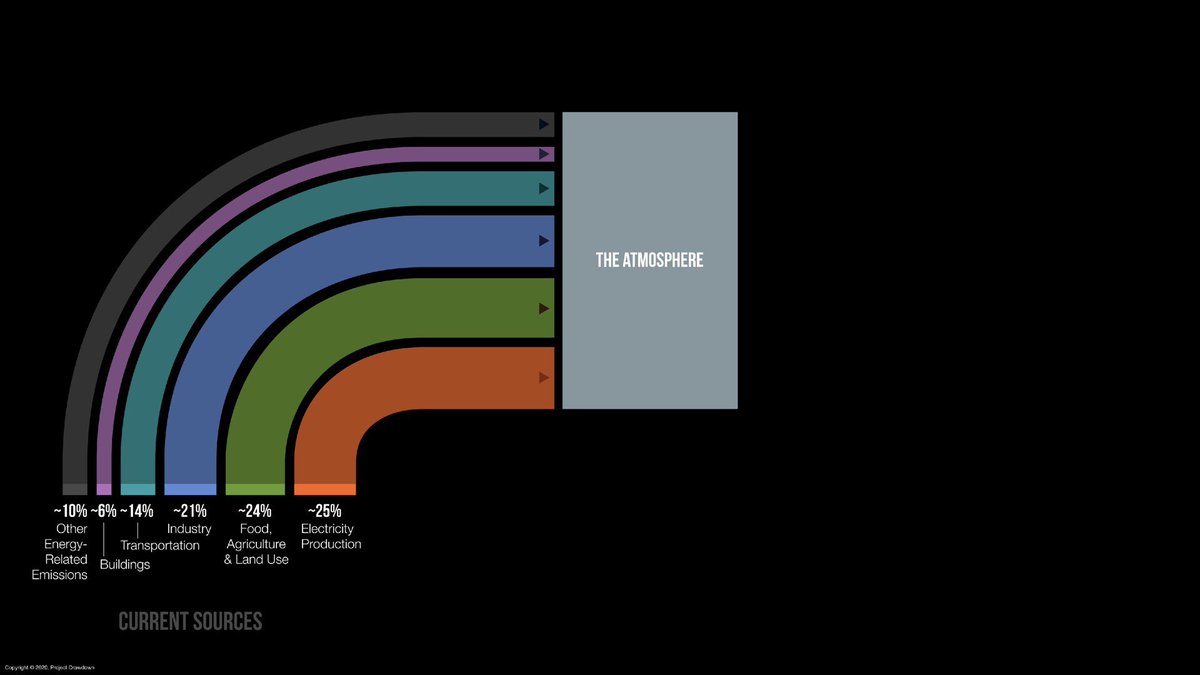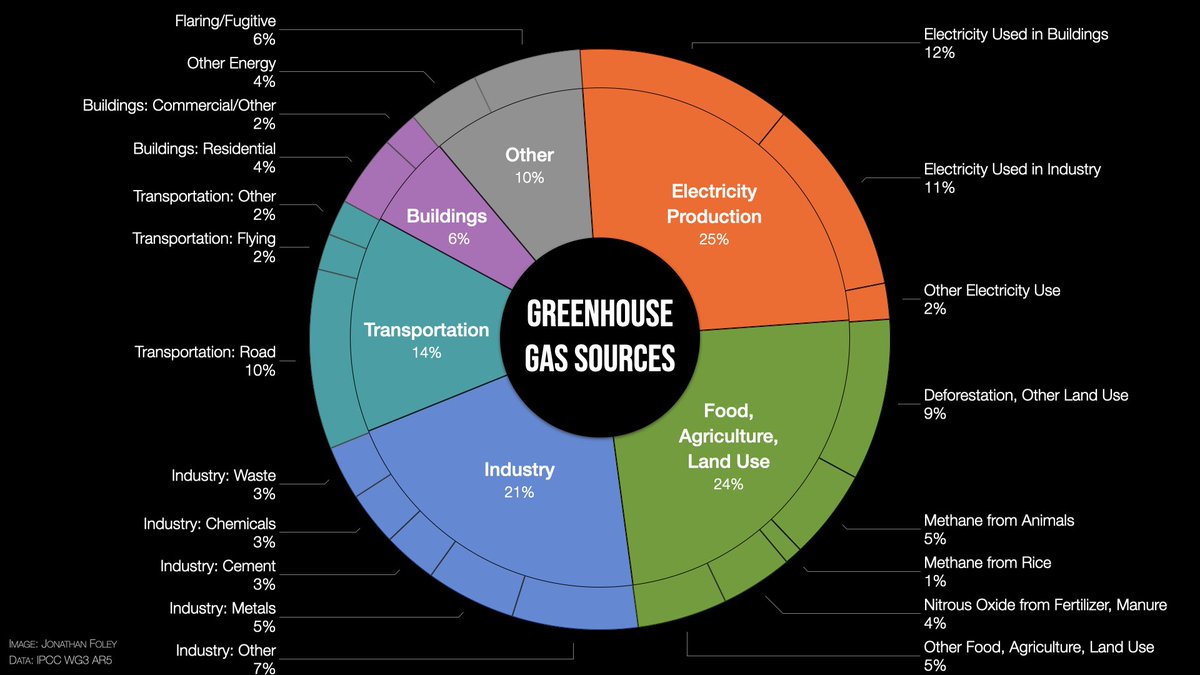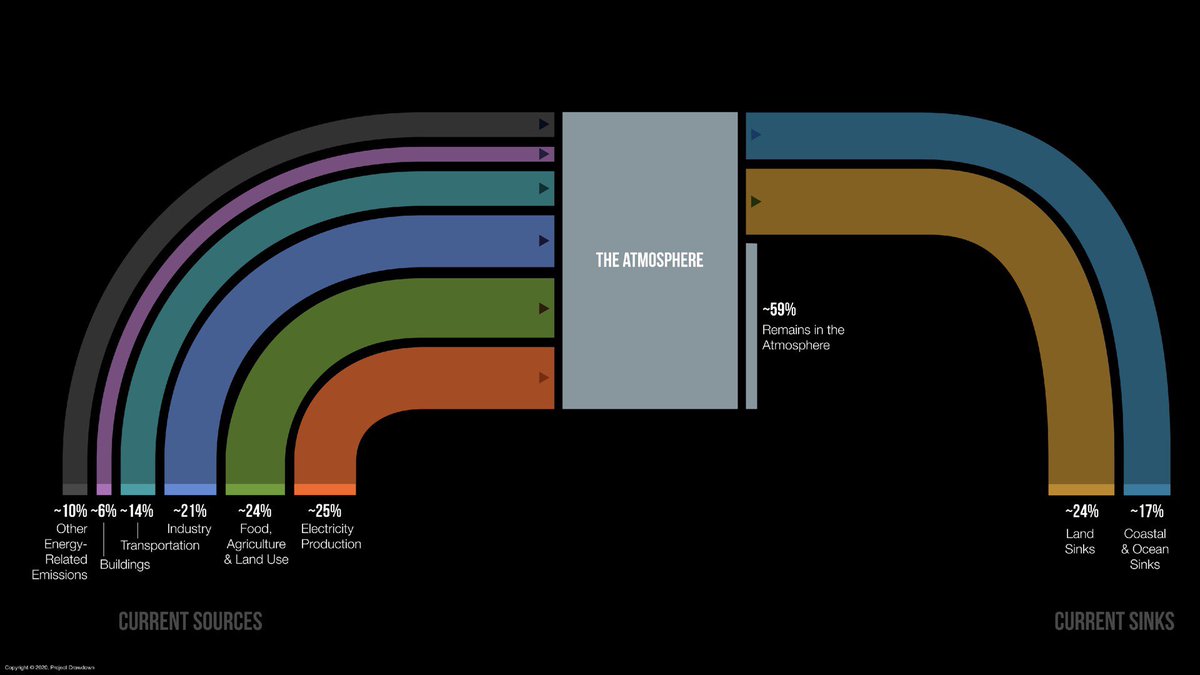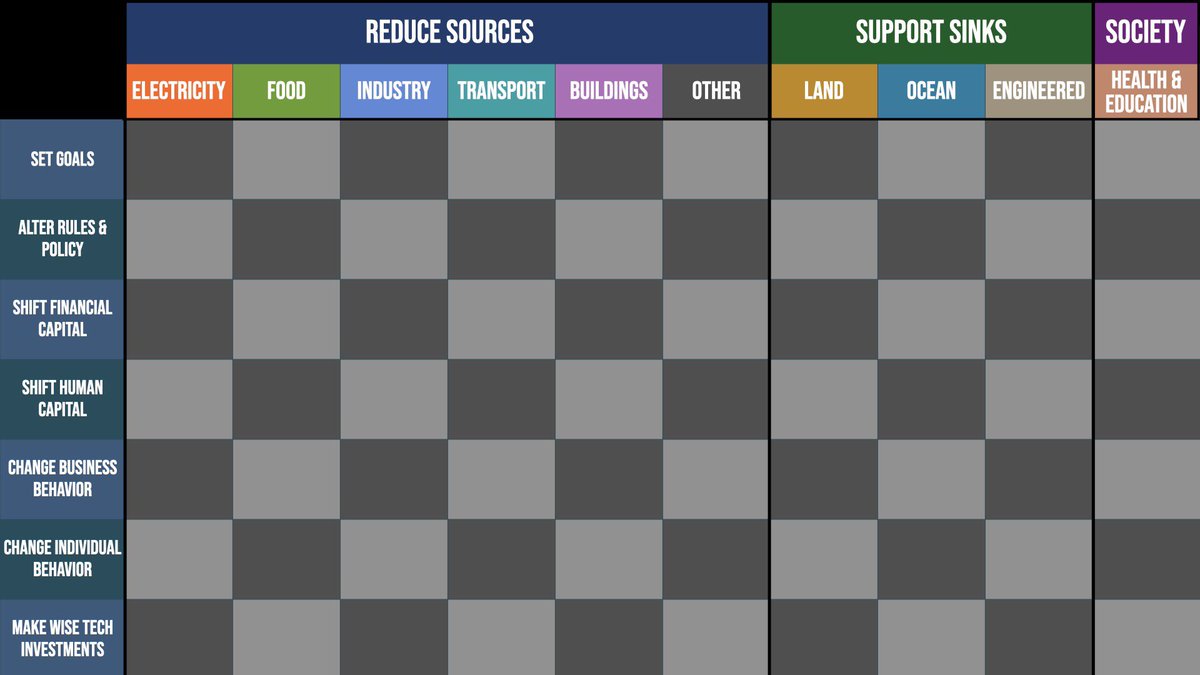Addressing climate change is like playing chess.
We need to use all the pieces, employ multiple strategies, and always see the whole board.
Sadly, we’re not doing that today. https://link.medium.com/XzBeVRiNTdb
We need to use all the pieces, employ multiple strategies, and always see the whole board.
Sadly, we’re not doing that today. https://link.medium.com/XzBeVRiNTdb
To address climate change, without missing key solutions and opportunities (which we are largely ignoring today), we should consider learning some basic rules for “climate chess”.
Here is my thinking about the potential rule set...
Here is my thinking about the potential rule set...
The first rule of climate chess is this: The board is bigger than you think, and includes more than fossil fuels.
Here’s a breakdown of where greenhouse gases come from:
Here’s a breakdown of where greenhouse gases come from:
Only ~62% of the greenhouse gas emissions are carbon dioxide from burning fossil fuels. About 24% comes from agriculture and land use. Other emissions come from materials and other industry emissions.
Fossil fuels are critical, but not the only issue.
Fossil fuels are critical, but not the only issue.
The second rule of climate chess is that we need to rapidly reduce *all* sources of greenhouse gases, not just a few.
Here’s where they come from:
Here’s where they come from:
Here’s a more detailed breakdown of global sources we need to eliminate.
There are a lot of sources, so we need a lot of solutions — especially by being more efficient, and transitioning to low-GHG systems of energy, food, and materials.
There are a lot of sources, so we need a lot of solutions — especially by being more efficient, and transitioning to low-GHG systems of energy, food, and materials.
The third rule of climate chess is that we need to protect and maintain nature’s massive “sinks” of greenhouse gases.
Over 40% of our GHG emissions, and around 55% of our CO2 emissions, are removed by nature each year. For free.
Over 40% of our GHG emissions, and around 55% of our CO2 emissions, are removed by nature each year. For free.
Note that *nature* is removing ~41% of our greenhouse gases, largely in forests and the ocean.
So far, *all* of our attempts to remove carbon with farms, planting trees, or new machines is not even a fraction of a percent. We can even see them in the atmosphere.
So far, *all* of our attempts to remove carbon with farms, planting trees, or new machines is not even a fraction of a percent. We can even see them in the atmosphere.
That’s why protecting nature is so important.
The fourth rule of climate chess is that we should create new, long-term carbon sinks.
We can mimic nature — on farmland or the ocean — and plant trees. And we may eventually build machines that can do this at scale too.
But we need to be keenly aware of their limitations.
We can mimic nature — on farmland or the ocean — and plant trees. And we may eventually build machines that can do this at scale too.
But we need to be keenly aware of their limitations.
Beyond the cost and limited scale of them so far, the big problems with human-generated sinks are whether they are verifiable, timely (not taking years or decades to build up), or permanent.
Human-generated carbon sinks are not a substitute for reducing sources of greenhouse gases or protecting nature’s existing sinks. They can be helpful, in the long run, but are not a replacement for more urgent action. Consider this a “both-and” strategy, not an “either-or” one.
The fifth rule of climate chess is that we need to actively manage a broad portfolio of solutions. And we need to consider solutions that come from outside traditional climate thinking.
Here’s our take on solutions from @ProjectDrawdown
Here’s our take on solutions from @ProjectDrawdown
The sixth rule of climate chess is that we need to pursue multiple tactics to bring solutions to scale.
Not just policy. Not just behavior change. Not just tech. All of them.
Not just policy. Not just behavior change. Not just tech. All of them.
Tactics we need to pursue, simultaneously: set bold and measurable goals, alter policy, shift financial capital, shift human capital, change business behavior, change individual behavior, and make wise tech investments.
The final rule of climate chess is see the whole board, and collaborate with others to play the game.
Here’s the board we need to play on:
Here’s the board we need to play on:
To learn more about the solutions we need, and tactics to scale them, read the essay. It’s short, and easy to read.
And for much more on climate solutions, check out our work at http://drawdown.org
And for much more on climate solutions, check out our work at http://drawdown.org

 Read on Twitter
Read on Twitter







